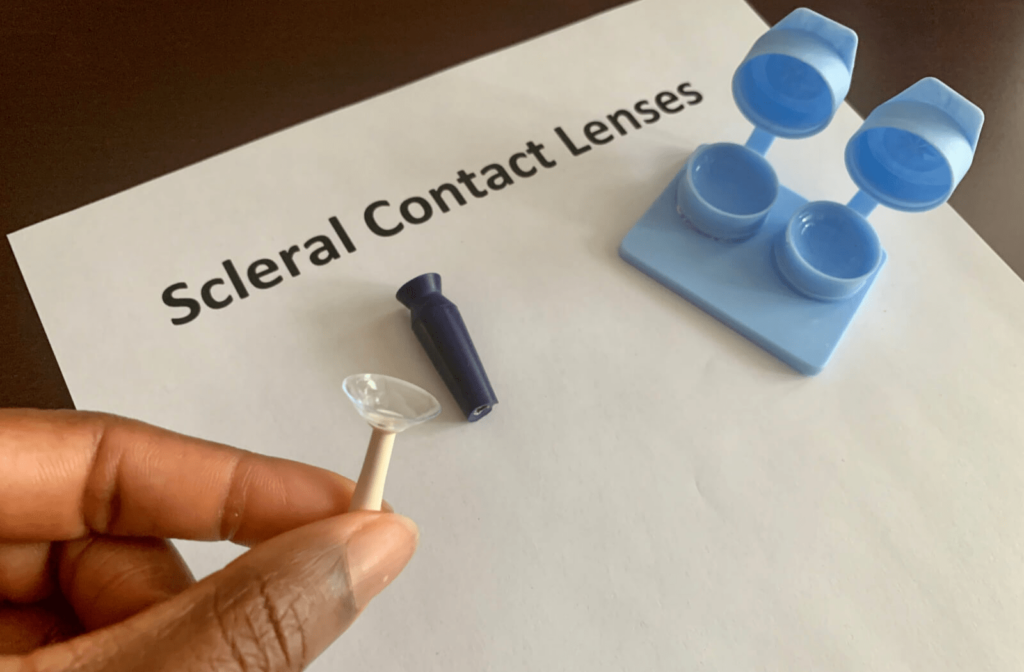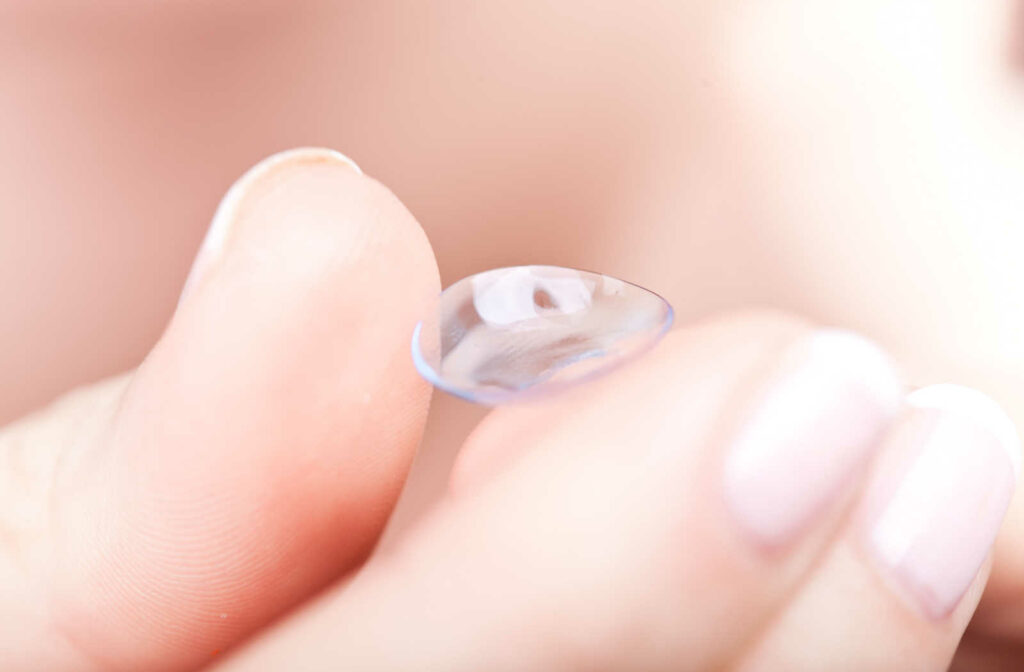Contacts can be a convenient and comfortable way to correct your vision. But for people with dry eyes, they can pose a challenge.
Dry eyes occur when your eyes do not produce enough tears or the tears evaporate too quickly, leaving your eyes feeling irritated, uncomfortable, and red. Fortunately, several types of contacts can work for people with dry eyes, including soft, hydrogel, and hard contact lenses.
Finding the right pair of contact lenses that promotes comfort and prevents dry eye symptoms starts with an eye exam and contact lens exam.
Everything You Need to Know About Dry Eye Disease
Dry eye disease is a common condition caused when your eyes don’t produce enough tears or tears are of poor quality. Tears are essential for the health and lubrication of the eyes, which normally contain a mixture of water, oil, and mucus.
However, when there’s an imbalance in the tear film, you can experience discomfort, irritation, and inflammation in the eyes.
Some common symptoms of dry eye disease include:
- Dryness or grittiness
- Burning or stinging sensation
- Redness
- Sensitivity to light
- Blurred vision
- Eye fatigue
- Difficulty wearing contact lenses
Several causes of dry eye disease lead to insufficient tears or tear film dysfunction. These can include the following:
- Age
- Hormonal changes
- Certain medications
- Environmental factors
- Underlying health conditions
- Blinking less
The Best Contact Lenses for Dry Eyes
There are many treatment options to help manage dry eyes, such as artificial tears, eye drops, and medication. But if the cause of your dry eye is your contact lenses, you might think of giving up wearing them altogether.
For contact lens discomfort (CLD), speak to your eye doctor about trying a different kind of contact lens to reduce and manage dry eye symptoms. These can differ in lens material, water content, and size.
Soft Contact Lenses
Soft contact lenses, made from flexible plastic, allow oxygen to pass through. Newer versions, called hydrogel contacts, allow more oxygen to pass through. Soft contacts come in daily disposable or extended wear. Changing your lenses every day can help prevent protein deposit buildup, which can make your eyes feel drier.
Silicone Hydrogel Contact Lenses
Silicone-based hydrogel contacts provide better oxygen permeability than traditional soft contacts. They are also known for their high moisture content, which may help keep your eyes hydrated and comfortable throughout the day.
Rigid Gas-Permeable Contact Lenses
Rigid gas-permeable (RGP) contacts are a hard plastic material that provides excellent vision correction for myopia. Shown to improve dry eye symptoms, they could also be considered a good alternative for silicone hydrogel contact lenses.
Scleral Contact Lenses
Scleral contacts are hard contact lenses that can work for those with difficulty wearing traditional contacts. They are larger than traditional lenses and rest on the sclera (the white part of the eye).
Scleral lenses are gas-permeable and let oxygen through. They also vault over the cornea (clear front part of the eye) to create a reservoir of tears between the lens and the cornea. This helps to keep the eyes hydrated and comfortable throughout the day.

Tips for Choosing the Right Contacts for Dry Eyes
When choosing contacts for dry eyes, it’s essential to consider several factors to get the best possible outcome. Here are some tips to keep in mind:
- Consult your eye doctor: Before choosing contacts, it’s important to have an eye and contact lens exam to help determine the best type of contact lens for your specific needs.
- Consider your lifestyle: The type and material of contact lenses will usually depend on your lifestyle and how often or long you wear your contacts.
Caring for Your Contact Lenses
Finding the right contact lens for your eyes and lifestyle is one way to maintain comfort. Taking proper care of your contact lenses can also help them remain comfortable, clean, and safe.
Here’s how you can care for your contact lenses:
- Keep your lenses clean
- Only wear your contact lenses for the recommended time
- Change your contact lenses as recommended
- Use rewetting drops before putting in your contact lenses
- Use rewetting drops throughout the day to keep your eyes moist
- If you start experiencing problems, try changing your contact lens solution
Proper care of your contact lenses helps maintain healthy eyes and avoid eye infections. If you experience discomfort, redness, or unusual symptoms, remove your contact lenses immediately and contact your eye doctor.
Clear & Comfortable Vision with Contact Lenses
Having the right contact lenses for dry eyes can vastly improve your comfort and eye health. It starts with an eye evaluation and exam to determine the right contact lens for your needs. Schedule an appointment with Bluebird Vision + Wellness today.



